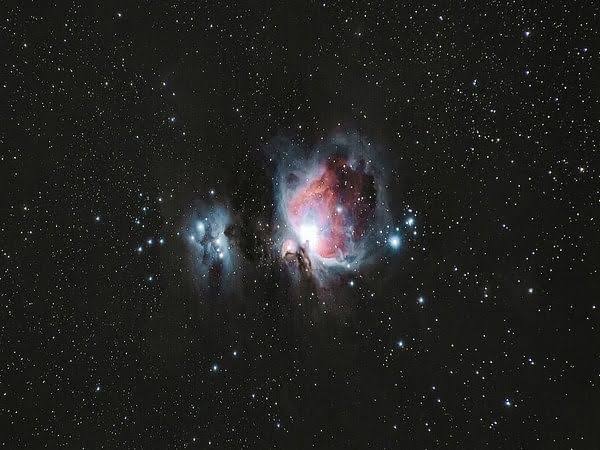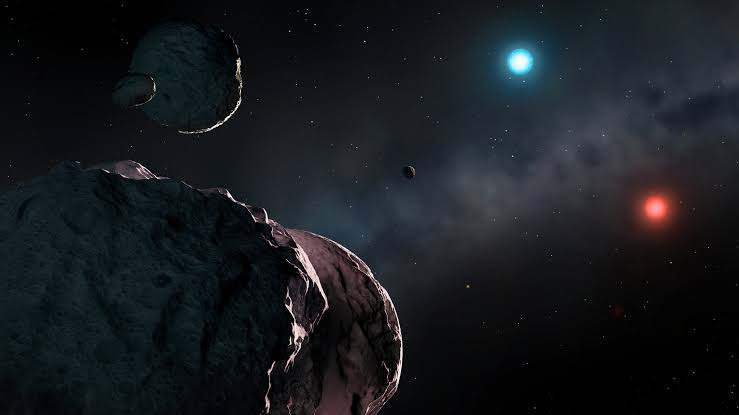According to astronomers led by the University of Warwick, one of the oldest rocky and icy planetary systems discovered in the Milky Way, is the oldest star in our galaxy that is accreting debris from orbiting planetesimals.
A dim white dwarf that is 90 light years away from Earth and the remnants of its circling planetary system are estimated to be more than 10 billion years old, according to their research, which was published today (Nov. 5) in the Monthly Notices of the Royal Astronomical Society.
Dwarf Stars
Most stars, including those like our sun, will eventually turn into white dwarfs. A star that has used up all of its fuel, shed its outer layers, and is currently contracting and cooling is known as a white dwarf. Any planets in orbit will be disturbed and, in some circumstances, destroyed during this process, and their debris will be left behind to accrete onto the surface of the white dwarf.
Two peculiar white dwarfs seen by the European Space Agency’s GAIA space observatory were modeled for this study by a team of astronomers led by the University of Warwick. The team further analyzed both of the stars, which are both polluted by planetary debris. One was discovered to be unusually blue, while the other is the faintest and reddest star discovered to date in the nearby galactic neighborhood.
How Did The Researchers Determine The Cooling Of The Red Star?
In order to determine how long the “red” star WDJ2147-4035 has been cooling, astronomers used spectroscopic and photometric data from GAIA, the Dark Energy Survey, and the X-Shooter instrument at the European Southern Observatory. They discovered that the star is approximately 10.7 billion years old, of which 10.2 billion years have been spent cooling as a white dwarf.
Through the process of spectroscopy, which involves examining the star’s light at various wavelengths, it is possible to spot the presence of various elements in the star’s atmosphere as well as their relative amounts.
The team identified the metals sodium, lithium, and potassium in the spectrum from WDJ2147-4035, as well as a possible accretion of carbon, making it the oldest metal-polluted white dwarf to date.
Only marginally younger than WDJ2147-4035, the second “blue” star, WDJ1922+0233, was contaminated by planetary debris with a makeup close to the continental crust of Earth. The scientific team came to the conclusion that WDJ1922+peculiar 0233’s mixed helium-hydrogen atmosphere is what gives it its unusually blue color despite its cold surface temperature.
The Debris Of WDJ2147-4035

The WDJ2147-4035 red star’s debris, which was discovered in its otherwise nearly pure-helium and high-gravity atmosphere, came from an ancient planetary system that endured the star’s transformation into a white dwarf, leading astronomers to claim that this is the oldest planetary system around a white dwarf ever found in the Milky Way.
What Did The Researchers Observe?
“These metal-polluted stars demonstrate that Earth is not the only planetary system containing planetary bodies similar to ours,” according to lead author Abbigail Elms, a Ph.D. candidate in the Department of Physics at the University of Warwick.
White dwarfs are so common in the universe—97% of all stars will eventually turn into them—that it’s crucial to comprehend them, especially those that are this fantastic.
Cool white dwarfs, which were created from the oldest stars in our galaxy, shed light on how planetary systems formed and developed around the oldest stars in the Milky Way.
“In the Milky Way, we are discovering the earliest star remains that have been contaminated by former Earth-like planets. The fact that these events took place on a scale of 10 billion years and that those planets perished far before the Earth was even born is astounding.”
The problem with WDJ2147-4035
In addition, by measuring the rate at which those metals are assimilating into the star’s core, astronomers are able to establish how prevalent each of those elements was in the original planetary body. We can infer the characteristics of those planets by comparing those abundances to celestial objects and planetary material discovered in our own solar system, but in the case of WDJ2147-4035, that has proven difficult.
According to Abigail, “As the accreted planetary material are particularly lithium and potassium rich and unlike anything known in our own solar system, the red star WDJ2147-4035 is a mystery. This white dwarf is exceedingly interesting because of its extremely low surface temperature, the metals that it is contaminated with, its advanced age, and the fact that it is magnetic.”
Pier-Emmanuel Tremblay, a professor in the University of Warwick’s Department of Physics, said, “Since metals are formed in evolved stars and massive stellar explosions, the cosmos was less metal-rich than it is today when these old stars formed more than 10 billion years ago. A fascinating view into planetary formation in a metal-poor and gas-rich environment that was different from the circumstances in which the solar system began is offered by the two discovered white dwarfs.”
